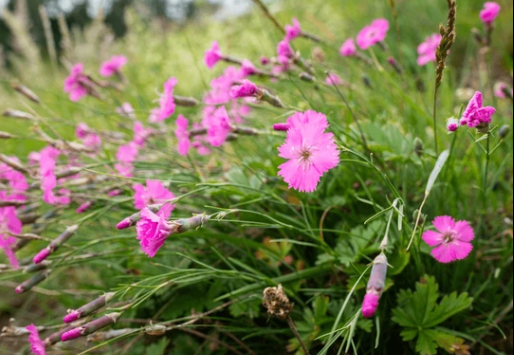The growing consumer preference for natural and plant-derived ingredients has fueled the search for novel bioactive compounds suitable for topical applications, particularly in skincare. Many endemic plant species, adapted to specific environments, produce unique secondary metabolites that hold promise for addressing dermatological concerns. Dianthus species, in general, have a history of diverse bioactivities, and their use in the food and cosmetic industries, owing to their color and potential antioxidant properties, further suggests their value. Given the limited research on the Algerian endemic Dianthus sylvestris subsp. aristidis, and preliminary evidence of antioxidant activity in its extracts, this study explored its phytochemical composition and biological activities relevant to topical applications, specifically photoprotection, aiming to identify a natural alternative for skincare formulations.
Methods
The researchers prepared hydromethanolic (HMeOH), ethyl acetate (EtOAc), and butanolic (n-BuOH) extracts from the leaves of Dianthus sylvestris subsp. aristidis. The phytochemical profile of the HMeOH extract was analyzed using LC-ESI-MS/MS. The cytotoxicity of all extracts was evaluated using the brine shrimp lethality test. The photoprotective potential was determined by calculating the sun protection factor (SPF) spectrophotometrically for the three extracts, comparing them to commercial sunscreens.
Key Findings
•LC-ESI-MS/MS analysis of the HMeOH extract revealed the presence of 22 bioactive compounds, including phenolic acids and flavonoids known for their antioxidant properties that can benefit skin health.
•All tested extracts exhibited no significant cytotoxicity in the brine shrimp assay (LC50 > 100 µg/mL), suggesting a potential safety profile for topical use.
•The EtOAc and n-BuOH extracts demonstrated significant photoprotective potential, with high SPF values of 45.19 ± 0.73 and 43.81 ± 0.59, respectively, placing them in the high protection category, comparable to commercial sunscreens.
•The high SPF values are likely attributed to the presence of bioactive molecules in these extracts, such as phenolic acids and flavonoids, which can absorb UV radiation and neutralize free radicals, thus protecting the skin from damage.
This study provides the first comprehensive evaluation of the photoprotective potential of Dianthus sylvestris subsp. aristidis, highlighting its novelty as a source of bioactive compounds for topical applications. The significant SPF values observed in the EtOAc and n-BuOH extracts suggest their promising potential for the development of natural and effective sunscreen formulations, addressing the growing demand for plant-based alternatives in the cosmetic industry. Future research should prioritize in vivo studies to validate the efficacy, photostability, and skin penetration of these extracts under real-world conditions. Further investigation into the formulation and long-term stability of topical products derived from this endemic plant will be crucial to fully unlock its potential in the skincare market
Link to the study: https://www.mdpi.com/1424-8247/18/4/578

